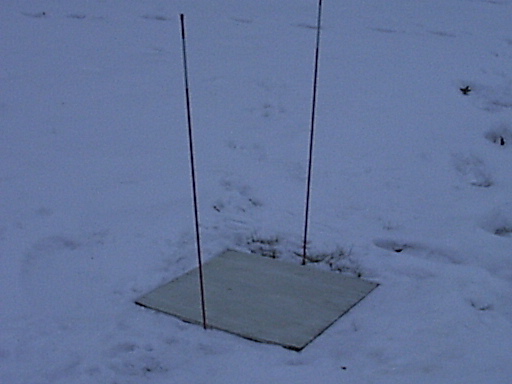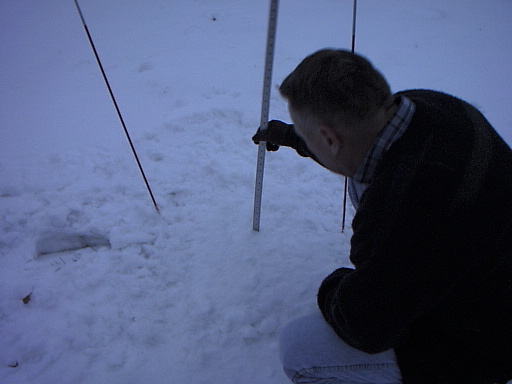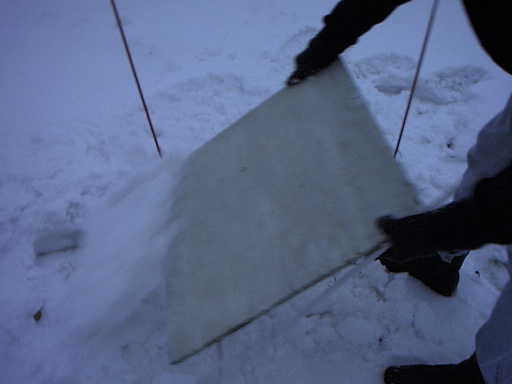Tips for Measuring Snow

Two types of measurements are reported:
Newly fallen snow is reported in INCHES and TENTHS (such as 6.3").
Total depth of snow on the ground is reported to the nearest WHOLE INCH (such as 5").
Tools needed:
Getting ready:
Take your measurments at a location where drifting does not usually occur. If you have snow drifts, then simply take measurments in several spots away from large dirfts. Calculate the average of these measurments. Spots sheltered from the weather, such as those close to buildings or under trees, should be avoided.
Placing a snow board at a designated spot is the easiest way to measure snow. A snow board can be any light color board (roughly 2 feet by 2 feet) that is flat and placed on the ground or on top of new fallen snow. Mark the location of the board with a flag or stake.

If you aren't using a snow board, then a flat surface such as a picnic table or deck will also work. You can also measure snow directly on the ground, but this should be limited to areas of short grass so you obtain accurate measurments.
How to measure:

